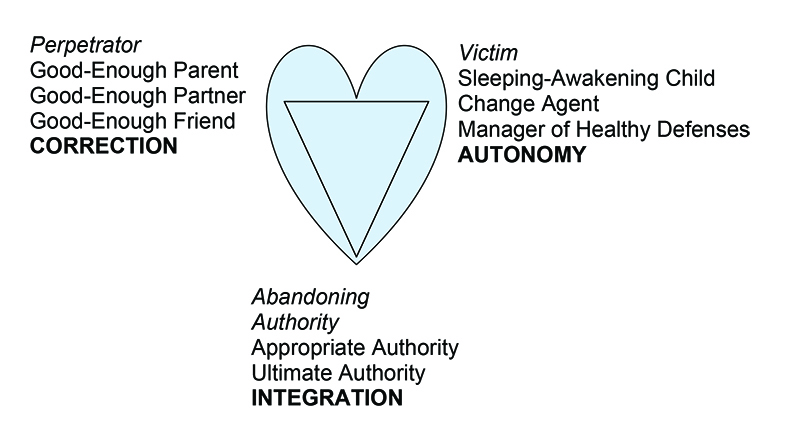Transforming the TSM Trauma Triangle:
From Roles of Post-Traumatic Stress to Roles of Post-Traumatic Growth
Scott Giacomucci, MSS, LCSW, CTTS, CET III, TSI AL – TSM East Coast Organizer
TSM’s trauma triangle offers a unique conceptualization of the internalization of trauma in the simplicity of role theory. This contribution to trauma theory was introduced over two decades ago as an adaption of Karpman’s interpersonal triangle which many clinicians in additions treatment or family therapy are familiar with.
TSM’s trauma triangle has been taught all over the world in the past two decades, ultimately helping countless clients to better understand themselves and heal from their trauma. At this time, TSM’s trauma triangle theory has begun to evolve once again; into a Transformative Triangle using TSM’s already established transformative roles. Following the evolutionary nature of this theory, it grows from an interpersonal model (Karpman), to an intrapsychic model (trauma triangle), and now into a Triangle of Transformation.
TSM’s intrapsychic trauma triangle of victim, perpetrator, and abandoning authority use role theory to provide an operational definition of Post-Traumatic Stress in action. This is what it looks like in action – internalized. While the Transformative Triangle offers an operational definition of Post-Traumatic Growth in action. The Transformative Triangle, organized on the three poles of TSM Transformative functions, – Integration, Autonomy, and Correction, can be thought of as the opposite side of the trauma triangle as the roles and role functions align and serve as clinical role interventions necessary to move out of the corresponding trauma roles.
The Appropriate Authority role (and later the Ultimate Authority role), which is the integration of TSM prescriptive role functions, is the primary role that allows one to get off the trauma triangle and end the cycle of abandoning self (Abandoning Authority role) on the trauma triangle. The role transformation from Abandoning Authority to Appropriate Authority and Ultimate Authority constitutes a shift from abandonment to integration.
The victim role transforms into the Sleeping-Awakening Child, holding the innocence, spontaneity, and creativity of the individual. Moving from a place of victimhood, this pole transforms into a place of autonomy including TSM’s Change Agent and Manager of Healthy Defenses roles.
While the Perpetrator role is the opposite side of the coin when it comes to TSM’s Good-Enough Parent, Good-Enough Partner, and Good-Enough Friend roles. This role transformation demonstrates a move from self-harm to correction and developmental repair.
The Transformative Triangle, with its three poles, contains all 8 of TSM’s identified transformative roles under the umbrellas of TSM’s transformative role functions – autonomy, integration, and correction. To visualize things, you might imagine the Victim transform into a Sleeping-Awakening Child, the Perpetrator shift into a Good-Enough Parent, and the Abandoning Authority evolve into an Appropriate Authority. The Transformative Triangle is often visualized in a heart shape, overlapping the TSM trauma triangle (see image below).
The beauty of this theory is that it evolved organically from TSM practice and TSM training. In the sometimes-chaotic nature of organizing trainings, interacting with attendees, experiencing successes and at times failures, we came to understand that TSM’s Transformative Roles had become internalized in each of us and were being demonstrated in our ability to hold discomfort, tolerate uncertainty, and tap into a knowing that whenever a rupture had occurred – a repair would soon follow!

